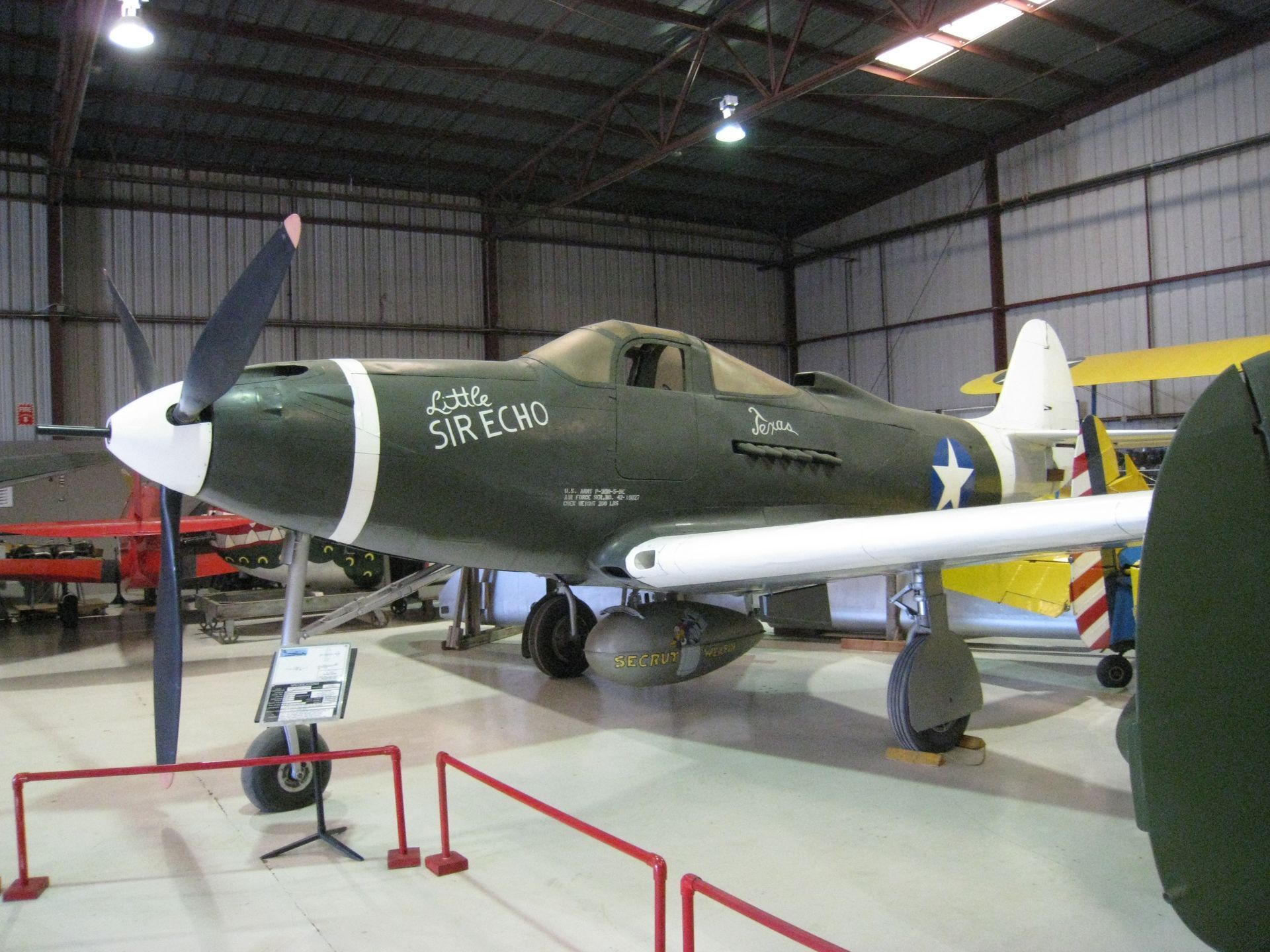
This is P-39N-5 “Little Sir Echo / Small Fry” Serial Number 42-19027 which served with the USAAF 5th Air Force (AF), 71st Tactical Reconnaissance Group (TRG), 82nd Tactical Reconnaissance Squadron (TRS), from June 1943 to July 16, 1944. It was abandoned at Tadji, Papua New Guinea, a Japanese airfield that was liberated by the US Army on April 26, 1944. Tadji became a major Allied air depot for American and Australian forces, and the resting place for this P-39 for the next thirty years. It is now on static display at the Planes of Fame Museum in Chino, CA.
This specific P-39 was delivered to the US Army on April 28, 1943, and sent to the Pacific in May. Lyndall W. Tate was assigned to this aircraft. Lyndall was born Oct 20, 1920 in Texas, and passed away Sept 15, 2008. He served over 28 years in the military. If anyone else has any further information on Lyndall, please let us know more about this hero. The aircraft was recovered from Tadji in a 1974 salvage operation funded by David Talichet’s Yesterday’s Air Force (MARC). It currently is on static display at the Planes of Fame museum. It still supports its original markings of Olive Drab over Neutral Grey with White New Guinea theatre markings on tail unit, wing leading edges and spinner (thin White band on nose). In addition it features an interesting shark mouth on the center drop-tank.
The Bell P-39 was one of the US’s main-line fighters when war first broke out in the Pacific at the beginning of World War II. It was unique at the time for having a tricycle undercarriage and a mid-mounted engine located behind the pilot. This arrangement was due to the proposed installation of a powerful 30 mm cannon in the nose. Ultimately, the P-39 was unable to achieve the same performance of later US and European fighters, mainly due to a lack of a turbo-supercharged engine which greatly limited the P-39’s ceiling and speed. However, its low-altitude performance, mid-mounted engine, and armor plating allowed it to become a great ground-support aircraft, most notably used by the Soviet Air Force. In the end, the Bell P-39 became Bell’s most successful fixed-wing aircraft that they ever produced.



![it_was_awe808[1]](http://www.z-car.com/blog/wp-content/uploads/2010/11/it_was_awe8081-849x1024.png)

















